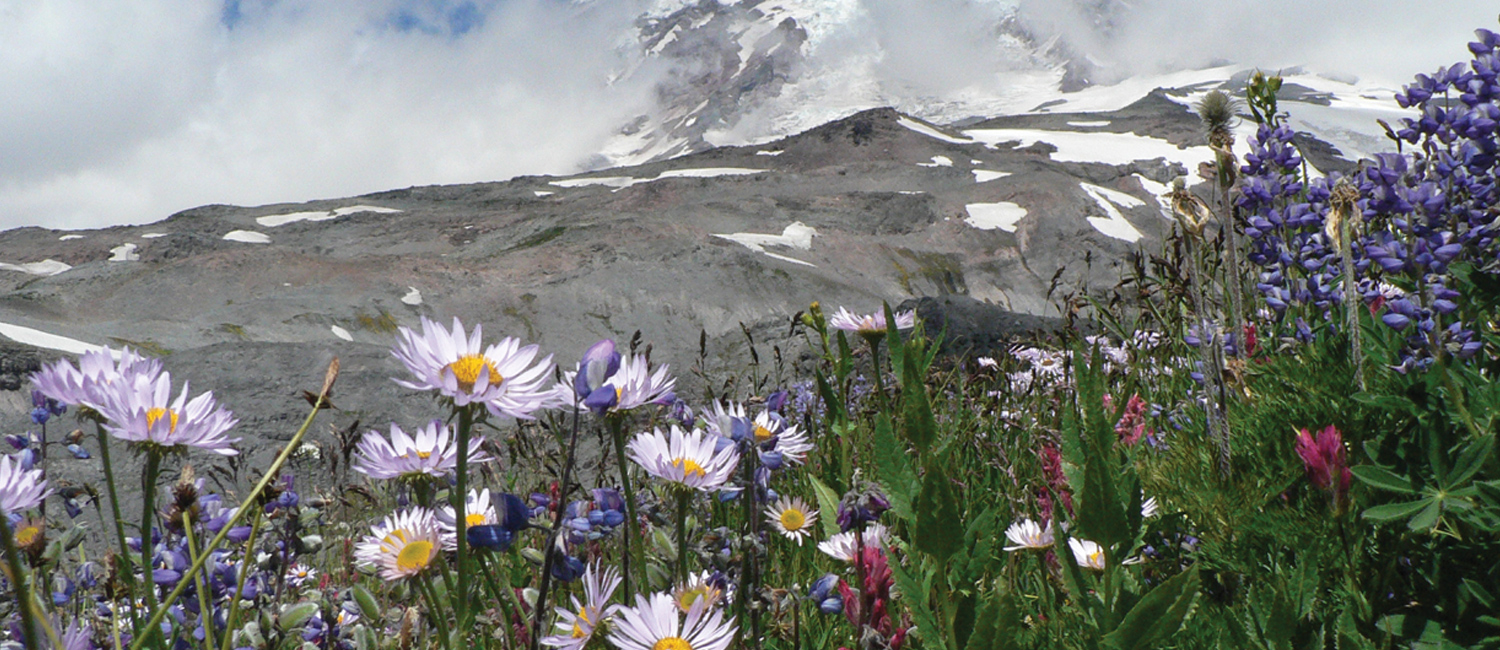
An early spring
The photo above depicts Mount Rainier National Park in Washington state, and if recent trends hold, its colorful blooms will show up earlier on contemporary calendars than they did on your grandmother’s.
That’s because spring is coming earlier than its historical average in many of America’s national parks, according to a recent study of 276 sites by researchers from UWM, two other universities, the U.S. Geological Survey and the National Park Service. For more than half of those parks, evidence shows extreme early onsets of spring.
The project used temperature records at the parks from the past 112 years and correlated those with climate-change indicators developed by Mark D. Schwartz, UWM distinguished professor of geography.
“My model provides the key to knowing when plants are responding to the growing season,” Schwartz says. It pegs the start of spring to seasonal events, such as the first bud and bloom of certain plants. “Coupling this with temperature data offers a standard way of looking at the park. It tells you what the trends have been.”
This gives scientists a fuller picture of how climate change will affect each park. One example: Warmer springs are giving some invasive plants a head start on the growing season.